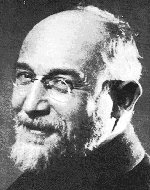

ERIK ALFRED LESLIE SATIE
17th May 1866 --- 1st July 1925
Copyright 1994-1998 Encyclopaedia Britannica
Last Updated on 2021
By Steven Ritchie
And now for the Music

Thanks to Philip DeWalt for the music below.
New (3193)"Veritables Preludes Flasques, pour un chien". Sequenced by Philip DeWalt. (947)"La Diva de l'Empire (1919)". Sequenced by Philip DeWalt
Thanks to Niclas Fogwall for the music below.
New (3192)"Allegro, 1884". Sequenced by Niclas Fogwall. New (3191)"Balancoir from, Sports et Divertisse, 1914". Sequenced by Niclas Fogwall. New (3190)"Modere No.1". Sequenced by Niclas Fogwall. (948)"Danse de travers No.1,(1897)". Sequenced by Niclas Fogwall
(944)"Gnossienne No.5,(1889)". Sequenced by Niclas Fogwall
Thanks to B.S. Lengton for the music below. Email (mb.lengton@12move.nl)
(2680)"Gnossiènne No.1". Sequenced by B.S. Lengton. (2681)"Gnossiènne No.2". Sequenced by B.S. Lengton. (2682)"Gnossiènne No.3". Sequenced by B.S. Lengton. (2683)"Gnossiènne No.4". Sequenced by B.S. Lengton. (2684)"Gnossiènne No.5". Sequenced by B.S. Lengton. (2685)"Gnossiènne No.6". Sequenced by B.S. Lengton. (2615)"Cinq grimaces pour le songe d'une D'été, No.1, Préambule". Sequenced by B.S. Lengton. (2616)"Cinq grimaces pour le songe d'une D'été, No.2, Coquecigrue". Sequenced by B.S. Lengton. (2617)"Cinq grimaces pour le songe d'une D'été, No.3, Chasse". Sequenced by B.S. Lengton. (2618)"Cinq grimaces pour le songe d'une D'été, No.4, Fanfaronnade". Sequenced by B.S. Lengton. (2619)"Cinq grimaces pour le songe d'une D'été, No.5, Pour sortir". Sequenced by B.S. Lengton. Thanks to Geoff Retallick for the music below. Email (g.retallick@btinternet.com")
(2652)"My Intro and Ending to Gymnopedie in Real Time". Sequenced by Geoff Retallick
(1746)"Ogive No.1". Sequenced by David Cooke
(1747)"Ogive No.2". Sequenced by David Cooke
(1748)"Ogive No.3". Sequenced by David Cooke
(1749)"Ogive No.4". Sequenced by David Cooke
(1750)"Sarabande No.1". Sequenced by David Cooke
(1751)"Sarabande No.2". Sequenced by David Cooke
(1752)"Sarabande No.3". Sequenced by David Cooke
(943)"Le Piccadilly (1904)". Sequenced by John Cowles
(632)"Gnossienne No2". Sequenced by Mats Asplund
(473)"Gymnopedie No.1". Sequenced by Mats Asplund
New (3194)"Kimiga". Sequencer unknown. (945)"Gymnopedie No.2". Sequencer unknown.
(946)"Gymnopedie No.3". Sequencer unknown.

If you done any Classical pieces of say for example, Delius, mozart, and so on etc,
please email them to the classical music site with details to
"classical (@) ntlworld.com" written this way to stop spammers
just remove spaces and brackets for email address, thank you.

Visitors to this page --

Back to Classical Midi Main Menu click "HERE"